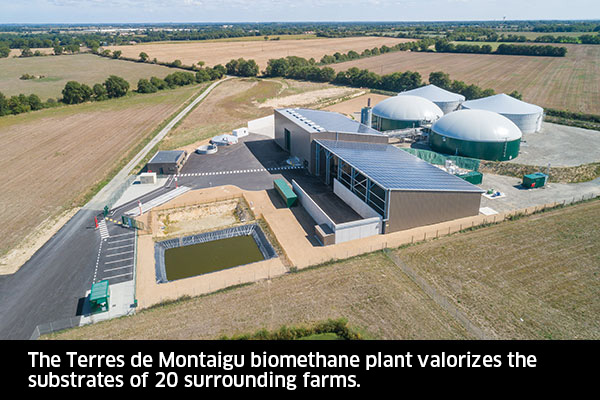Renewable energies that are locally-based
The acceleration of renewable energy production requires a greater number of infrastructures. These new infrastructures play an important role in stimulating regions, as they make use of local resources and jobs that cannot be relocated. This is the case, for example, in the port of Zeebrugge, in Belgium, where 11 wind turbines will supply green electricity to Belgium's largest recharging park for electric vehicles, or along Dieppe-Le Tréport, where, from 2024 onwards, 62 wind turbines will produce the equivalent of the annual consumption of 850,000 people.
These projects will boost the development of local VSEs and SMEs (earthworks, supply of concrete, connection to the national electricity system, etc.) and will have a considerable impact on local jobs. As a matter of fact, according to the France Energie Eolienne association, by the end of 2019, 20,200 direct and indirect jobs were identified on the entire wind farm ecosystem, an 11% increase compared to 2018 and of more than 26.8% since 2016.
An impetus that also supports the development of green gases.
Biomethane: a source of energy and earnings
With 76 new biomethane injection units commissioned in France in 2020 and connected to the gas network1, an ever-growing number of local economic stakeholders are turning towards biogas production every year. There are numerous reasons for this acceleration. Among these, the economic element is a decisive factor. In fact, biomethane production – from local resources such as residues from sewage treatment plants, agricultural waste or food industry waste – is in line with the national goal to have biogases represent 10%2 of French consumption by 2030, all while creating new local economic opportunities and jobs! After deducting costs, the earnings of a methanisation installation varies on average between €100,000 and €150,000 per year3, without counting the numerous benefits of this new sector, in particular, a supplement to the income of farmers, regional planning, local jobs, reduction of artificial fertilizers, waste treatment and the development of a circular economy.
ENGIE BiOZ, the in-house biomethane expert
Since devising and operating a biomethane production unit cannot be improvised, we have created ENGIE BiOZ. Our specialised subsidiary, closely tied to the regions, provides expertise at each stage of methanisation projects, from feasibility studies to the operation works.

Farmers on the front line!
Farmers are among the most active methanisation project leaders: they hold 70% of the 199 sites currently in service in France. As the leading agricultural producer in Europe, France can rely on its resources to develop this source of renewable energy: according to ADEME, by 2035, agricultural deposits alone would make it possible to produce the equivalent of more than 10% of the national gas consumption. There are also economic interests: with an average monthly income of €1,3904, farmers who invest in an installation can considerably supplement their wages.
Key figure
Up to 53,000 jobs could be created in France over the next 10 years thanks to the biomethane sector.
Creation of local jobs
The other regional benefit of the biomethane sector is the creation of local jobs. We estimate that each new installation creates on average 3 to 4 direct jobs linked to operation and maintenance5. Over time, 17,000 to 53,000 jobs could be created in France over the next 10 years in 5 professional fields: engineering, civil engineering, fitting and installation, input management and operation. However, training would have to follow suite, with, in particular, 4500 to 12,300 full-time equivalent individuals to be trained in operation before 2030. It is with this in mind that in November 2020 ENGIE has opened the Academy for energy and climate transition professions, its Apprenticeship centre (CFA).
